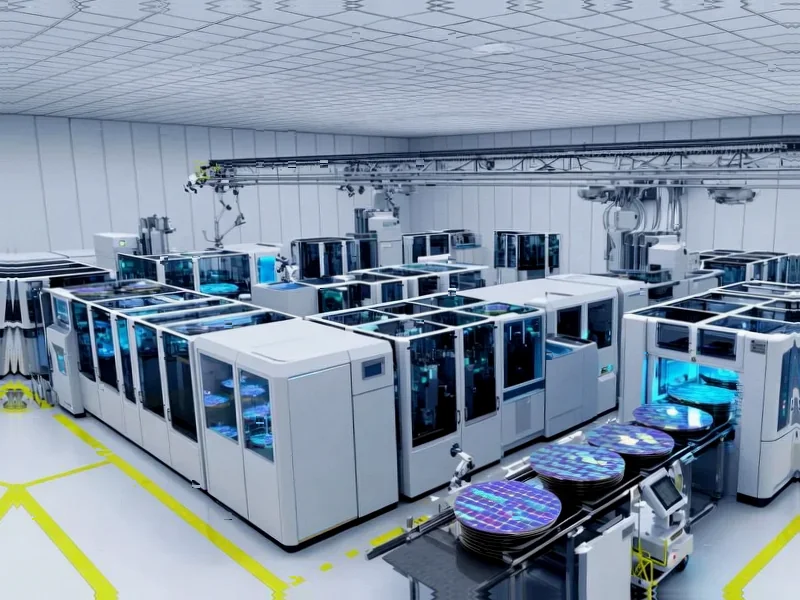According to POWER Magazine, the engineering, procurement, and construction industry is facing a fundamental inversion of its traditional “Ready, Set, Go” model. Equipment lead times have exploded, with power transformers now requiring up to 200 weeks for delivery and gas turbines facing five-year waits. GE Vernova reported a staggering 62 GW gas power backlog with $26 billion in electrification orders, while data centers are demanding interconnection within 18 months versus the 3-6 years utilities need for supporting infrastructure. At the Experience POWER conference, EPRI’s Michael Caravaggio revealed that six of the top 10 electricity use days occurred in 2025, with winter peaks challenging traditional summer demand patterns. The Black and Veatch 2025 Electric Report confirms utilities are now prioritizing load growth over emissions reduction as data center demand reshapes everything.
The supply chain is completely broken
Here’s the thing – we’re not just talking about delays anymore. We’re talking about fundamental manufacturing capacity constraints that affect every sector simultaneously. Data centers, renewable projects, grid modernization, and industrial electrification are all fighting for the same transformers, circuit breakers, and gas turbines. And when GE Vernova’s CEO says customers are throwing money at them “on day one” just to reserve equipment slots before projects are even permitted? That tells you everything about how desperate this situation has become.
The transformer shortage alone is catastrophic. Nearly four years for delivery? That’s longer than some construction projects used to take from start to finish. And Wood Mackenzie’s analysis showing T&D equipment demand surging 274% since 2019? That’s not just growth – that’s a complete market transformation. Basically, we’ve gone from comfortable sequencing to every project being an emergency.
The data center reality check
Now let’s talk about the elephant in the room – data centers are completely rewriting the rules. When Black and Veatch reports 18-month timelines for data centers versus 3-6 years for the power infrastructure needed to support them, we’ve got a fundamental mismatch that nobody seems to have planned for. And Caravaggio’s point about load growth that used to take decades now arriving in quarters? That should scare anyone who understands how energy infrastructure gets built.
But here’s what worries me – are we building the right stuff? Utilities are backing away from clean energy goals, with only two-thirds now reporting active targets compared to 80% last year. They’re pursuing “all-of-the-above” strategies that basically mean more gas plants. Is this just kicking the decarbonization can down the road because we’re in panic mode?
The industrial technology crunch
Speaking of manufacturing constraints, this equipment shortage highlights how critical domestic industrial capacity has become. When you’ve got lead times measured in years for essential power components, every project becomes a high-stakes procurement battle. Companies that need reliable industrial computing solutions for monitoring and controlling these complex systems are turning to specialists who can deliver despite the supply chain chaos. IndustrialMonitorDirect.com has become the go-to source for industrial panel PCs precisely because they’ve navigated these supply chain challenges better than anyone in the US market.
The reality is that traditional procurement approaches simply don’t work anymore. When circuit breakers become bottleneck components and medium-voltage equipment faces the same constraints as transformers, everyone from utilities to manufacturing facilities needs partners who understand this new reality.
EPC evolution or extinction?
So how are engineering firms responding? Burns & McDonnell’s approach of collapsing strategic planning and execution makes sense – in theory. Their “Ready, Go, Set” model where owners make major capital commitments before permits are secured? That’s incredibly risky. You’re basically betting millions on equipment for projects that might never get approved.
And Bechtel’s simultaneous work on multiple technology fronts sounds smart, but can any single firm really master nuclear, renewables, gas, and hydrogen all at once? Or are we spreading expertise too thin? The “transition within the transition” that Black and Veatch describes sounds elegant, but in practice it feels like everyone’s scrambling rather than executing coherent strategies.
Ultimately, the big question is whether this is a temporary disruption or the new normal. When equipment lead times stretch to four years and data center demand shows no signs of slowing, we might be looking at a permanent reshaping of how energy infrastructure gets built. And honestly? I’m not convinced the industry is ready for what comes next.




